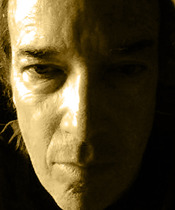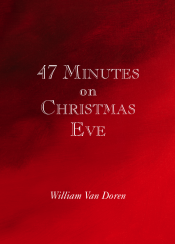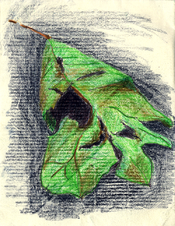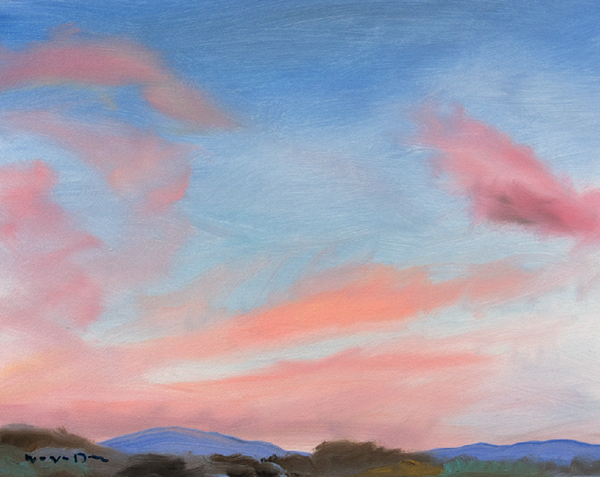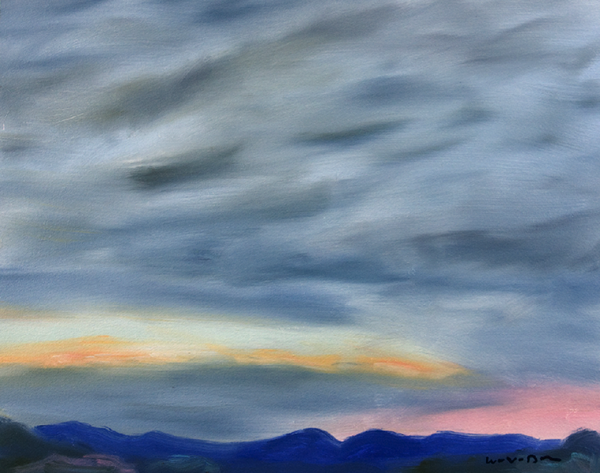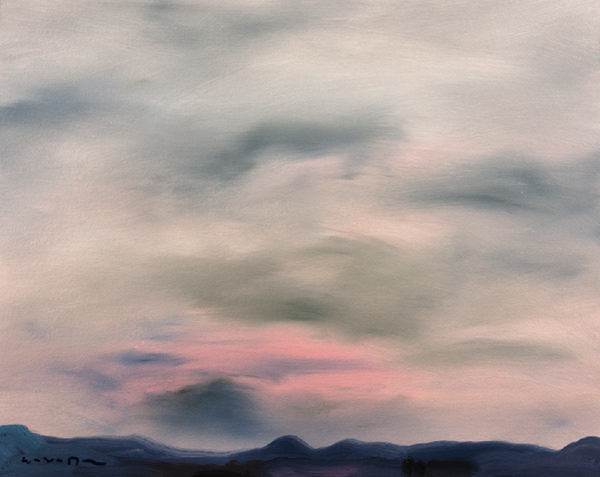 William Theodore Van Doren. Sunset from Stony Point, Albemarle County, Va. Oil on watercolor block, 16 x 20.
William Theodore Van Doren. Sunset from Stony Point, Albemarle County, Va. Oil on watercolor block, 16 x 20.
Clear tonight, or nearly so.
On this >1,000-acre place we inhabit as renters there are, to our knowledge, four persimmon trees, and every year we watch as the fruit ripens and taunts us with our inability to make proper use of it.
If you were to look up persimmons online, and find them, say, on a cooking website, you’d think, hey, what’s the problem, there are plenty of ways to use persimmons!
But, ironically – even though our English word ‘persimmon’ originates with the Powhatan tribe of Virginia – what most people now mean when they discuss persimmons are two Asian varieties, and these are the kind you can find in supermarkets.
In fact, ‘fresh grocer’ Tony Tantillo cautions you to be aware that there is not one, there are TWO (as if there were just two) varieties of persimmon:
... the Fuyu, the kind you can eat right away, and the Hachiya, the kind you can’t. If you bite into an unripe Hachiya persimmon, it is as if you just drank six cups of extra strength tea. This astringent flavor is due to the high level of tannin in the fruit, and there is a good chance that you would never try a persimmon again because it tastes so bitter.
That’s fine as far as it goes, but even the Hachiya is a sweetie pie compared with the persimmons that gave persimmons their name – persimmons with virginiana in their Latin title. And these guys, these eastern, country, American persimmons, are tough to deal with.
Let’s put it this way. I’ve long been aware that you were supposed to let our persimmons go past the frost. They start out green and hard, then ripen to orange, softening, and then, after a hard frost, they turn a bit darker, even somewhat blue in places, and very soft – and then you’re supposed to be able to eat them.
I don’t think so!
‘Astringent’ doesn’t do them justice. Ever seen those joke photos of some old guy, seemingly with no teeth, his lips and mouth and cheeks so puckered up it looks like he’s swallowed them? That’s what it feels like.
I’ve tried various ways of using them, including a really interesting recipe in one of my favorite ‘old’ (1970s-era) books, still available, Putting It Up With Honey: A Natural Foods Canning and Preserving Cookbook, by Susan Geiskopf ... Geiskopf was in California when she wrote the book and I think that recipe needs one of the Asian varieties.
As for virginiana, I figured the thing to do might be to add sugar or honey and strong spices and try to make a sort of chutney. I gave up on my last attempt, before Thanksgiving, partly because of flavor failures and partly because of the two huge flat seeds that take up so much of each persimmon.
Precisely because of those unmistakable seeds, I can report one discovery I made out in the fields today. Even though persimmons are coming along rather late, and aren’t yet even entirely orange, much less soft, bears – who must possess mouths of steel (and iron constitutions) – seem to have no problem with them whatsoever.
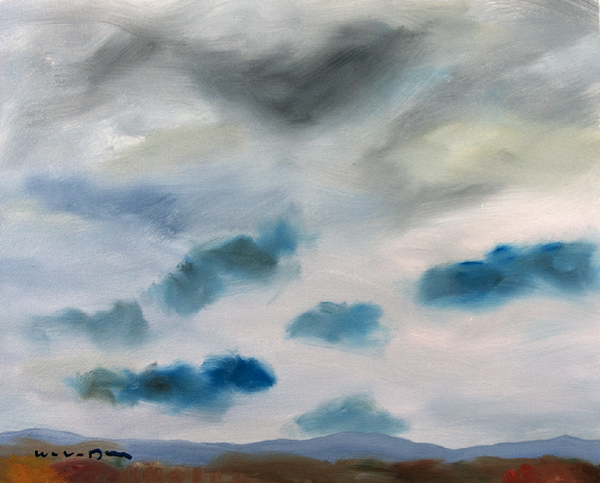 William Theodore Van Doren. Sunset from Stony Point, Albemarle County, Va. Oil on watercolor block, 16 x 20.
William Theodore Van Doren. Sunset from Stony Point, Albemarle County, Va. Oil on watercolor block, 16 x 20. Wednesday, March 3, 2010 at 07:13PM | by
Wednesday, March 3, 2010 at 07:13PM | by  BVD | in
BVD | in  Sunset Paintings,
Sunset Paintings,  Sunsetology | tagged
Sunsetology | tagged  Blue Ridge,
Blue Ridge,  cooking,
cooking,  peaches | | Comments Off
peaches | | Comments Off 
